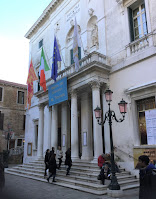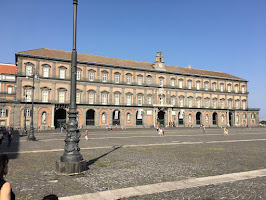Dante Giacosa - auto engineer
Designer known as ‘the father of the Cinquecento'
The automobile engineer Dante Giacosa, who worked for the Italian car maker Fiat for almost half a century and designed the iconic Fiat 500 - the Cinquecento - in all its incarnations as well as numerous other classic models, died on this day in 1996 at the age of 91. Giacosa was the lead design engineer for Fiat from 1946 to 1970. As such, he was head of all Fiat car projects during that time and the direction of the company’s output was effectively entirely down to him. In addition to his success with the Cinquecento, Giacosa’s Fiat 128, launched in 1969, became the template adopted by virtually every other manufacturer in the world for front-wheel drive cars. His Fiat 124, meanwhile, was exported to the Soviet Union and repackaged as the Zhiguli, known in the West as the Lada, which introduced Soviet society of the 1970s to the then-bourgeois concept of private car ownership. Born in Rome, where his father was undertaking military service, Giacosa's family roots were in Neive in southern Piedmont. He studied engineering at the Polytechnic University of Turin. After completing his compulsory military service he joined Fiat in 1928. Read more…
______________________________________
Maurizio De Giovanni – crime writer
Detective novelist has opened up his native Naples to crime fiction fans
Bestselling author Maurizio De Giovanni was born on this day in 1958 in Naples in southern Italy. His novels have been translated into English, Spanish, Catalan, French and German and have sold well over a million copies throughout Europe. De Giovanni is best known for his two fictional detectives, Commissario Ricciardi, who works as a detective in 1930s Naples, and Ispettore Lojacono, who has been transferred to present day Naples from his home town of Agrigento in Sicily, after being accused of associating with the Mafia. He has also written stories featuring a very different character, a social worker called Mina Settembre, who is based at a clinic in Naples specialising in providing psychological support. In 2005, De Giovanni won a writing competition for unpublished authors with a short story, I vivi e i morti - The Living and the Dead - which was set in the 1930s and featured the character Commissario Ricciardi. He was working in a bank at the time, a job for which by his own admission he had no particular inclination but which paid the bills. Always known as a bookworm, he wrote stories that he would show his colleagues. Read more…
____________________________________
Bianca Maria Visconti – Duchess of Milan
Ruler fought alongside her troops to defend her territory
Bianca Maria Visconti, the daughter of Filippo Maria Visconti, Duke of Milan, was born on this day in 1425 near Settimo Pavese in Lombardy. A strong character, her surviving letters showed she was able to run Milan efficiently after becoming Duchess and even supposedly donned a suit of armour and rode with her troops into battle, earning herself the nickname, Warrior Woman. Bianca Maria was the illegitimate daughter of the Duke of Milan, and was sent to live with her mother in comfortable conditions in a castle where she received a good education. At the age of six she was betrothed for political reasons to the condottiero, Francesco I Sforza, who was 24 years older than her. Despite the political situation changing many times over the years, Bianca Maria and Francesco Sforza did get married in 1441 when she was 16. The wedding took place in Cremona, which was listed as part of her dowry. The celebrations lasted several days and included a banquet, tournaments, a palio and a huge cake made in the shape of the city’s Torrazzo, the bell tower. Bianca Maria quickly proved her skills in administration and diplomacy. Read more…
___________________________________
Franco Bonvicini – comic book artist
Comic artist became famous for satirising the Nazis
Franco Bonvicini, who signed his comic strips Bonvi, was born on this day in 1941 in either Parma or Modena in Emilia-Romagna. The correct birthplace is unknown. According to the artist, his mother registered him in both places to obtain double the usual amount of food stamps for rations. After a brief spell working in advertising, Bonvi made his debut in the comic strip world for the Rome newspaper Paese Sera with his creation Sturmtruppen in 1968. This series satirising the German army was a big hit and was published in various periodicals over the years. It was also translated for publication in other countries. Although left-wing and a pacifist, Bonvi was fascinated by war and built up immense knowledge about Nazi Germany’s uniforms, weapons and equipment, which he depicted faithfully in his illustrations. The cartoons satirised military life and the Nazis themselves, providing him with an endless source of comic and surreal situations. Bonvi also created the character Nick Carter, a comic detective, who later featured in a play, two films and a number of television cartoons. Read more…
____________________________________
Pope Benedict XIV
Bologna cardinal seen as great intellectual leader
Prospero Lorenzo Lambertini, who would in his later years become Pope Benedict XIV, was born on this day in 1675 in Bologna. Lambertini was a man of considerable intellect, considered one of the most erudite men of his time and arguably the greatest scholar of all the popes. He promoted scientific learning, the Baroque arts, the reinvigoration of the philosophy of Saint Thomas Aquinas and the study of the human form. He was Bishop of Ancona at the age of 52, Archbishop of Bologna at 56 and Pope at 65 but at no time did he consider his elevation to these posts an honour upon which to congratulate himself. He saw them as the opportunity to do good and tackled each job with zeal and energy. A man of cheerful character, he set out never to allow anyone to leave his company dissatisfied or angry, without feeling strengthened by his wisdom or advice. He attracted some criticism for his willingness to make concessions or compromises in his negotiations with governments and rulers, yet his pursuit of peaceful accommodation was always paramount and historians have noted that few conflicts in which he sought to arbitrate remained unresolved. Read more…
.jpg)
.jpg)

.jpg)

.jpg)


.gif)





.jpg)


.jpg)
_Panorama.jpg)



.jpg)

.png)
.jpg)
.jpg)

.jpg)

.jpg)

.jpg)

.jpg)
.jpg)



.png)

